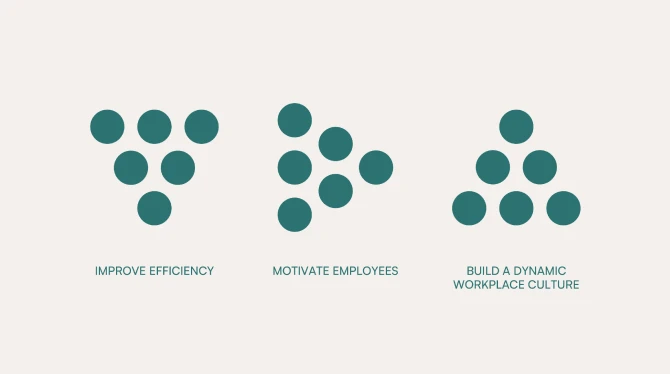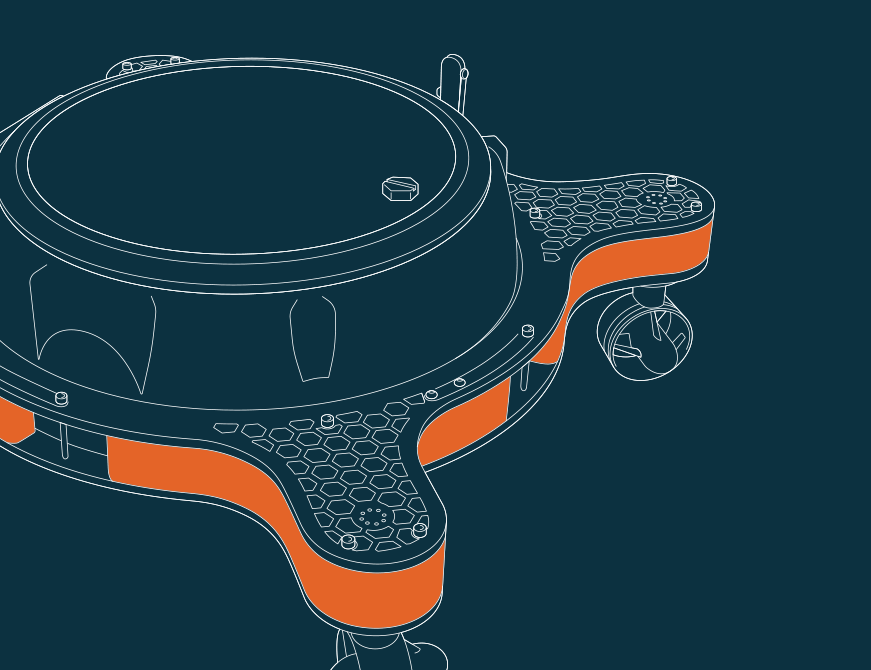🤷♂️
What To Look For When Hiring A Creative Agency
LAST UPDATED 17 May, 2024
Choosing the right creative agency to partner with can significantly influence the trajectory of your existing or new venture and it’s digital presence. Use the insights in this guide to navigate the selection process confidently, focusing on important attributes, what to look for, red flags, and finally making the decision.

Essential Qualities (First Tier – Must Have)
In your initial interactions and interviews, gauge how the agency measures project success, their receptiveness to feedback, and their approach to project management. These factors can greatly affect the execution of your partnered creative endeavors. Qualities that you shouldn’t compromise on are:
- Diverse portfolio – a diverse and compelling portfolio is non-negotiable. It showcases the agency’s creative capabilities and provides insight into their experience across different industries, potentially including yours. It signals that their team can tackle any problem which comes up during your collaboration.
- Clear and effective communication – the foundation of any successful partnership is clear communication. Your chosen agency should be able to articulate their creative ideas clearly and understand your vision and needs accurately.
- Strategic insight and business acumen – look for an agency that brings more to the table than just aesthetic excellence. They should offer strategic insights that align with your business goals, market positioning, and target audience behavior. Aesthetics are implied, but the aim of your collaboration is to build your brand, it’s much more than being able to create a nice social media post.
- Visibility of the team – knowing who is behind the scenes is invaluable. It gives you a clearer picture of the expertise and creative energy you’ll be tapping into. Behind all agencies are people, ghost agencies are no fun.
- Simple and transparent pricing – a clear understanding of fees and cost involved ensures alignment with your budget and helps avoid any unexpected financial surprises down the line. This displays confidence that the agency has a well-developed system, is well organized, and knows the value they bring to the table.
Desirable Attributes (Second Tier – Good To Have)
A secondary set of characteristics might just be what tips the scales of your decision toward a specific agency. Nevertheless, the first tier is something that should eliminate a majority of agencies you’ve scoped. Drilling into the details, below are a few items listed that can help with your decision:
- Collaborative spirit – the ideal agency acts as an extension of your team, offering a partnership rather than a vendor-client relationship. This integrated approach ensures the final output resonates deeply with your brand’s ethos. Look for agencies that offer integrations for daily communication and project management.
- Being tech savvy – in a digital-first world, an agency’s familiarity with the latest tech and platforms can give your brand a competitive edge, allowing for innovative solutions that captivate your audience.
- Proven success stories – case studies and testimonials from previous clients can offer you a glimpse into the agency’s potential to transform your creative visions into impactful realities.
Bonus Features (Third Tier – Nice To Have)
Use this tier as a last resort in case you’ve brought it down to two or three choices. These items are not as important as the first two tiers, but can make a difference. Of course, we all want the best possible quality for ourselves, but the list below shouldn’t be the focus when scoping:
- Industry recognition – while not the sole indicator of an agency’s capabilities, awards and recognitions can underline their commitment to excellence and innovation in their field. Accolades can indicate an agency’s has been around for some time and is recommended by it’s peers.
- Additional services – agencies that offer a range of services, from branding to digital marketing, can provide a more integrated approach to your creative needs. This means you might be able to delegate more to them and integrate them further into your front, mid, or back office. Another thing to think about is how much effort needs to be put into their management. Agencies with a wide range of services tend to self-manage pretty well.
- Well known clients – agencies that have worked with well-established brands can have the edge since they’ve already passed scoping of larger companies.
What to Overlook (Irrelevant / Red Flags)
Be on the lookout for agencies that are trying to fake it until they make it. Before stepping into a conversation, be aware of a few things to optimize your scoping.
Irrelevant
- Awards overemphasis – awards should not overshadow the tangible results and strategic insights an agency can offer your brand.
- Size of the agency – the right fit for your project isn’t necessarily the biggest name or the largest team but the agency whose approach aligns with your vision and needs.
- Office aesthetics – an impressive office doesn’t guarantee project success. Focus on the agency’s work and their interaction with your team.
Red Flags
- Immediate availability – high-demand agencies may not have immediate openings, their waitlist is often a testament to their quality and reliability. If they have ‘Join our waitlist’ communicated on their site, beware, it might be a marketing technique.
- Lowest bidder – opting for the agency with the lowest quote may compromise the quality and strategic depth of the work delivered.
- Presentation over substance – a flashy pitch should not distract from the necessity for a strategic, results-focused partnership. Read between the lines to see if there is tangible value they are communicating.
- Lack of straightforward answers – observe the person you are speaking to. In case they don’t give you straight answers, or force vague answers instead of later check-ins, this might be a red flag.
Detail – Questions To Ask
Among the questions you have ready regarding the goals and outcomes at hand, here are a few more questions that can guide you to gaining more clarity when it comes to evaluating the first two tiers of the agency:
- How long do they retain their clients for?
- What does the on-boarding look like?
- What guarantees can they offer?
- How do they measure the success of their projects?
- How do they handle feedback and revisions?
- What does their project management process like?
- Why them?
Making The Right Choice
The search for the perfect creative agency is a blend of data analysis and feeling. It involves weighing tangible factors like portfolio quality and strategic insight against intangibles like cultural fit and collaborative potential.
By approaching this process with a holistic view, prioritizing the first and second tier, while keeping in mind what to overlook, you can select an agency that meets your current needs and positions your brand for long-term success.
The goal is to find a partner that embodies the ideal mix of creativity, strategic insight, and operational efficiency. This partner should understand your brand’s essence and should be able to translate that understanding into compelling digital experiences that resonate with your target audience.
Through this partnership, you have the opportunity to redefine your brand’s presence in the digital space, engaging your audience with a breath of fresh air and a refined creative perspective.
Ultimately, the decision to choose a creative agency should be driven by a comprehensive evaluation of their capabilities, but also gut feeling. Even if they have checked all the boxes during your evaluation, trust your inner intuition when making the final decision. This is a partner you will be working for some time and changing them at any point will exhaust additional resources and cost you time. Choose wisely!



